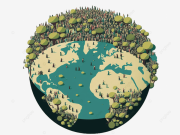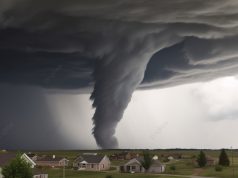Welcome to our blog, where we delve into the pressing issue of endangered species and the urgent need for their conservation. Join us as we explore the significance of biodiversity, the causes of species endangerment, the consequences of their loss, and the efforts being made to protect and restore these irreplaceable components of our natural world.
Understanding Endangered Species:
1.1 Importance of Biodiversity:
Exploring the critical role of biodiversity in maintaining healthy ecosystems and supporting a wide range of ecological processes.
Discussing the interconnectedness of species and the benefits they provide, such as pollination, nutrient cycling, and pest control.
1.2 Defining Endangered Species:
Defining what constitutes an endangered species and the criteria used to assess their status, including population size, habitat loss, and decline in genetic diversity.
Discussing the categories of endangerment, such as critically endangered, endangered, and vulnerable.
1.3 Causes of Species Endangerment:
Examining the primary drivers of species endangerment, including habitat loss, pollution, climate change, overexploitation, and invasive species.
Discussing the human activities that contribute to these causes, such as deforestation, illegal wildlife trade, and pollution.
Consequences of Species Loss:
2.1 Ecological Impacts:
Highlighting the ecological consequences of species loss, including disruptions in food chains, reduced ecosystem resilience, and altered community dynamics.
Discussing the potential cascading effects on other species and the overall health of ecosystems.
2.2 Economic and Social Implications:
Addressing the economic and social impacts of species loss, including the loss of ecosystem services vital for human well-being, such as clean water, climate regulation, and tourism opportunities.
Discussing the importance of valuing and incorporating the economic benefits of biodiversity conservation into decision-making processes.
2.3 Ethical and Cultural Significance:
Recognizing the intrinsic value of species and the ethical responsibility to protect and preserve biodiversity.
Discussing the cultural importance of species, their role in traditional knowledge systems, and the interconnectedness between indigenous communities and their natural environments.
Conservation Efforts:
3.1 Protected Areas and Habitat Conservation:
Highlighting the importance of establishing and effectively managing protected areas to safeguard critical habitats and provide refuge for endangered species.
Discussing the challenges and benefits associated with protected area networks.
3.2 Species-specific Conservation Measures:
Examining species-specific conservation strategies, including captive breeding programs, habitat restoration, and reintroduction efforts.
Discussing the role of scientific research in understanding species’ needs and developing targeted conservation plans.
3.3 International Cooperation and Policies:
Addressing the importance of international cooperation and agreements in protecting endangered species, such as the Convention on International Trade in Endangered Species of Wild Fauna and Flora (CITES).
Discussing the need for stronger regulations and enforcement to combat illegal wildlife trade and promote sustainable practices.
3.4 Community Engagement and Education:
Recognizing the significance of involving local communities in conservation efforts and empowering them as stewards of their natural environments.
Discussing the importance of education and raising awareness to foster a sense of responsibility and inspire action for species conservation.
Sustainable Development and Biodiversity Conservation:
4.1 Integrating Conservation with Development:
Highlighting the importance of integrating biodiversity conservation into development planning and decision-making processes.
Discussing approaches such as ecosystem-based adaptation, sustainable agriculture, and green infrastructure.
4.2 Sustainable Consumption and Trade:
Addressing the role of sustainable consumption choices in reducing the demand for products derived from endangered species.
Discussing the importance of promoting sustainable trade practices and supporting local communities’ livelihoods through alternative income sources.
4.3 Climate Change Adaptation:
Recognizing the need to address climate change as a major threat to endangered species.
Discussing the importance of implementing climate change adaptation strategies to safeguard habitats and assist species in adapting to changing conditions.
Conclusion:
As we conclude our exploration of endangered species, we emphasize the critical importance of preserving biodiversity and protecting the delicate balance of our ecosystems. By understanding the causes of species endangerment, implementing effective conservation measures, and promoting sustainable practices, we can work towards a future where endangered species thrive and contribute to the resilience and beauty of our natural world. Join us in future blog posts as we continue to address pressing environmental issues and advocate for the protection of our planet’s diverse and irreplaceable species.























